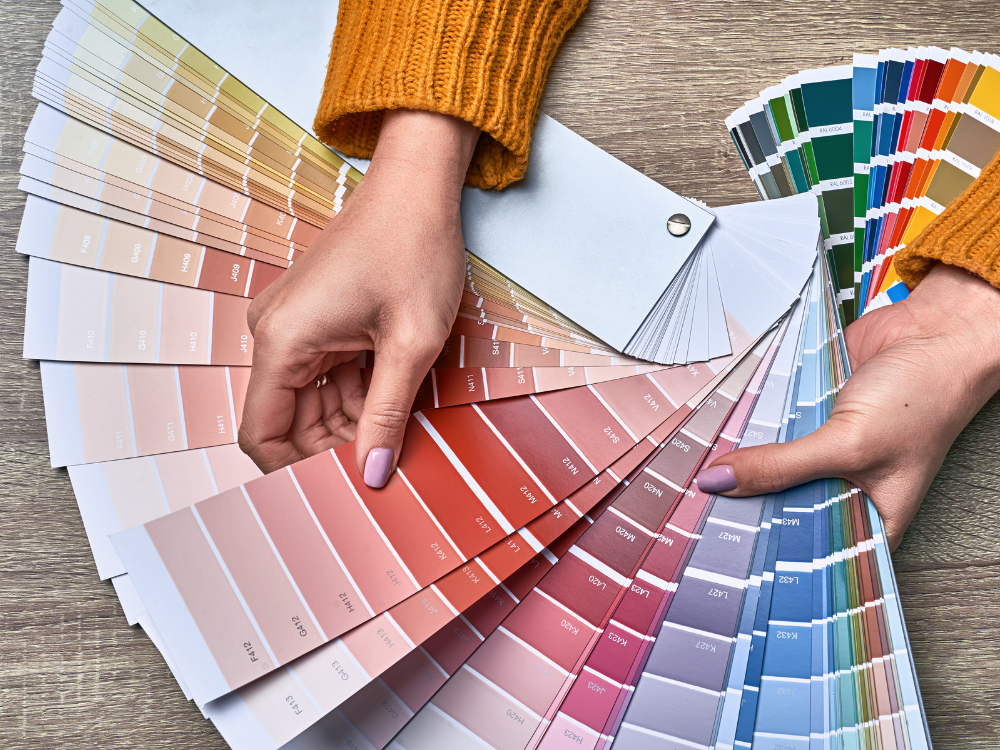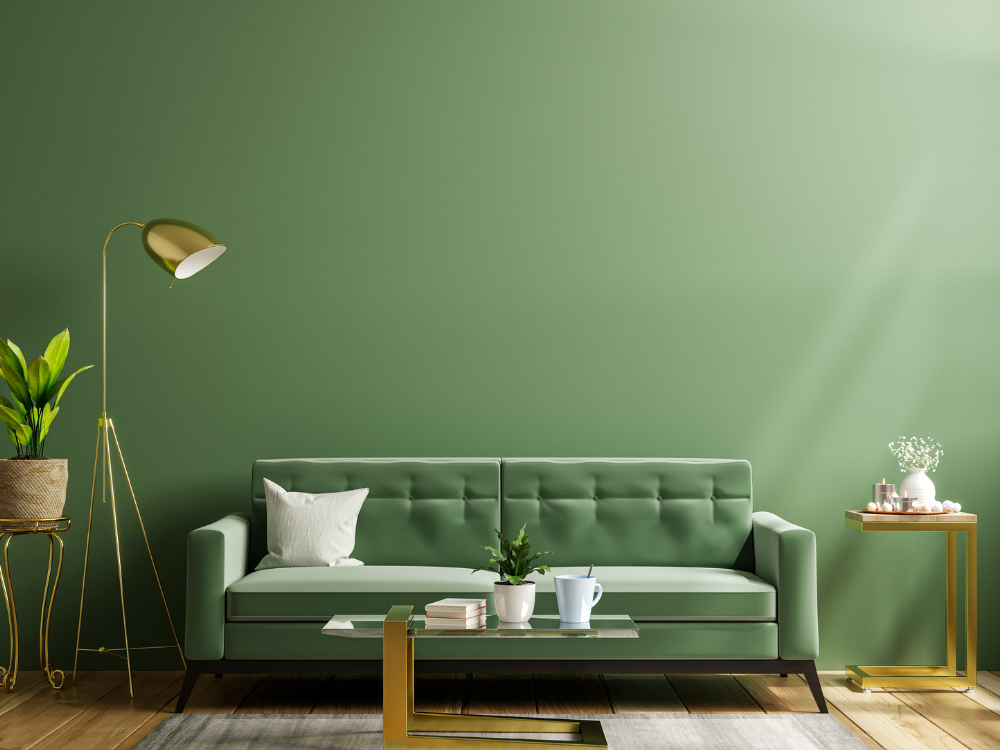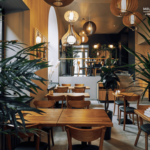Ever noticed how the colors in a restaurant affect your mood? It’s not just a coincidence. Color psychology plays a big role in how we feel when we’re dining out. Let’s explore how different colors can make us feel and behave in restaurant settings.
Impact of Colors on the Human Mind

Colors can make us feel different emotions and react in various ways. In restaurants, the colors they use can make us feel more welcome and happy, which can make our dining experience better.
When restaurants pick colors for their walls, furniture, and decor, they’re trying to create a certain vibe or feeling. Light colors like soft blues and greens can make us feel more lively and cheerful, while darker colors like deep reds and browns can make us feel relaxed.
Choosing the right colors is important for making customers feel comfortable and happy while they eat.
Exploring Color Psychology
Understanding how different colors affect our emotions and behaviors can help restaurant owners create the perfect atmosphere for their guests. Let’s explore the impact of various colors:
Red:

- Emotions: Represents love, passion, and excitement.
- Behavioral Impact: Stimulates appetite and increases energy levels.
- Usage in Restaurants: Ideal for creating a vibrant and energetic atmosphere, encouraging diners to indulge in their meals and enjoy a lively dining experience. Often used in fast-food chains and upscale restaurants to evoke a sense of excitement and appetite.
Blue:

- Emotions: Symbolizes trust, and calmness.
- Behavioral Impact: Promotes relaxation and a sense of peace.
- Usage in Restaurants: While blue is excellent for creating a serene and calming atmosphere, it may not be the best choice for stimulating appetite.
- Restaurants aiming for a more laid-back and soothing ambiance, such as fine dining establishments or wellness cafes, often incorporate blue hues into their decor to encourage relaxation and comfort.
Yellow:

- Emotions: Represents happiness, warmth, and positivity.
- Behavioral Impact: Attracts attention and promotes a cheerful atmosphere.
- Usage in Restaurants: Yellow is a vibrant and attention-grabbing color that is commonly used in family-friendly eateries and casual dining establishments.
- It stimulates the appetite and creates a welcoming ambiance that uplifts guests’ spirits. Incorporating yellow accents or elements in restaurant decor can enhance the overall dining experience, making guests feel happier and more relaxed.
Pink:

- Emotions: Evokes feelings of warmth, comfort, and tranquility.
- Behavioral Impact: Creates a relaxed and inviting atmosphere, perfect for dessert cafes or spaces with feminine themes.
- Usage in Restaurants: Pink is often incorporated into the decor of dessert cafes or establishments with a feminine aesthetic to enhance the feeling of coziness and comfort. Its soothing presence encourages guests to unwind and enjoy their sweet treats in a serene environment.
Green:

- Emotions: Symbolizes nature, health, and vitality.
- Behavioral Impact: Associated with freshness.
- Usage in Restaurants: Green is a popular choice for eco-friendly eateries or health-conscious restaurants. Its connection to nature promotes a sense of freshness and well-being among diners.
- By utilizing green elements into the decor, restaurants can create a refreshing ambiance that aligns with their sustainability-focused or health-oriented brand image.
Orange:

- Emotions: Represents satisfaction, energy, and enthusiasm.
- Behavioral Impact: Creates a lively and energetic atmosphere.
- Usage in Restaurants: Orange is known for its ability to stimulate the senses and uplift moods. Restaurants seeking to create a vibrant and energetic ambiance often incorporate orange accents or elements into their decor.
- Whether it’s through furniture, lighting, or decor accessories, the presence of orange can infuse diners with a sense of excitement and satisfaction, making their dining experience more enjoyable and memorable.
Understanding Color Symbolism Across Cultures
Let’s explore how color meanings can differ across various cultures:
White:

- Western Cultures: Symbolizes purity, cleanliness, and simplicity.
- Some Eastern Cultures: Associated with mourning, funerals, and death.
Red:

- Western Cultures: Represents love, passion, and excitement.
- Some Eastern Cultures: Symbolizes luck, prosperity, and happiness. Often used in traditional ceremonies and celebrations.
Bright Colors:

- Indian Culture: Vibrant and bold colors like oranges, pinks, and yellows are prevalent, symbolizing joy, happiness, and celebration. These colors are commonly used in festivals, weddings, and other auspicious occasions.
- Japanese Culture: Muted and subtle tones such as beige and grey are favored, reflecting simplicity, harmony, and tranquility. These colors contribute to creating a calm and serene atmosphere in traditional Japanese spaces.
Know about the cultural significance of colors is essential for restaurant owners and designers to ensure that the color choices resonate positively with their target audience and align with cultural norms and preferences.
Conclusion
Color psychology plays a significant role in shaping the ambiance and atmosphere of restaurants. By understanding the emotional and behavioral impacts of different colors, restaurant owners and designers can create spaces that resonate with their guests, enhance their dining experiences, and leave a lasting impression.
So..Are you one of those who are ready to transform their restaurant space with furniture that complements as per desired ambiance? Explore our wide range of furniture options designed to enhance the dining experience for your guests at Meubles Inde.
Take the first step towards creating a captivating restaurant environment by browsing our furniture collection today!




